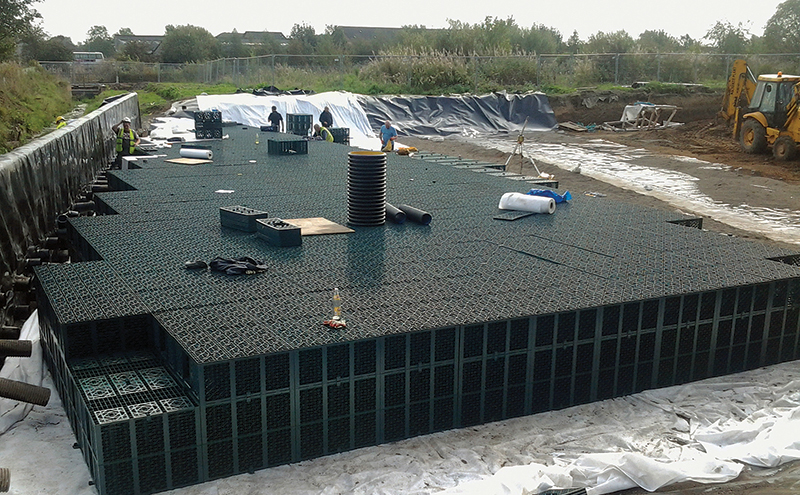
A “robust” stormwater storage solution from Hydro International is said to be helping protect a long-term flooding issue for Falkirk Council from peak rainfall risk.
Crossing under the main Edinburgh to Stirling railway, the Chapel Burn has caused repeated flooding close to the town centre of Larbert.
After considering several solutions, Falkirk Council designed and specified a new cellular storage surface water flood alleviation solution. The contractor, MM, proposed using the Hydro Stormbloc modular geocellular storage system. The storage space needed was said to be minimised with a Hydro-Brake Optimum vortex flow control.
John Divers, Falkirk Council’s engineering design officer said, “A hydro brake flow control device allowed us to use the smallest amount of storage required for the back-up volume.
“We evaluated the solution for attenuation storage and found it provided an ideal combination of effectiveness and low construction costs, in a restricted space and it could be landscaped over thus retaining the popular recreational area.”
Initial proposals to manage the risk of seasonal flooding focused on a permanent attenuation pond adjacent to the railway banking to act as an overflow for the Chapel Burn. However, there were complications with this solution including concerns that with the local sandy soil structure, the railway bank would be destabilised by the saturated ground.
There was also public concern that the recreational area would be reduced in size by a large pond. The proposed site for the pond also covered a Scottish Water 1200 mm drinking water main.
As the topography is flat, any solution had to be compatible with the low head parameters. Hydro Intenrational explained that the shallow dimensions of the 1480m2 Hydro Stormbloc tank with a 1.01 metre depth, enabled the required 5 l/s maximum discharge from the Hydro-Brake Optimum back into the Chapel Burn to be achieved without difficulty. The firm said the modular Stormbloc construction, with built-in inspection chambers, allows rapid installation and as it is load-bearing is suitable for turfing over for recreational use. The project was completed by main contractor Murdoch MacKenzie Construction.
“The rail line originally had a syphonic device to channel the burn under the bank, installed when the line was built,” added Mr Divers. “But it wasn’t coping with the increasing flood risk from the Chapel Burn. The railway closure made action more urgent, however rebuilding a larger syphon under the line would have caused major disruption to rail services.
“The Chapel Burn can experience very rapid changes in level, and the complete installation was designed with a tailor-made concrete drain channel installed alongside the burn.
“This acts as a weir, discharging into the Hydro Stormbloc attenuation tank, and provides instant relief when the burn starts to overflow.”







